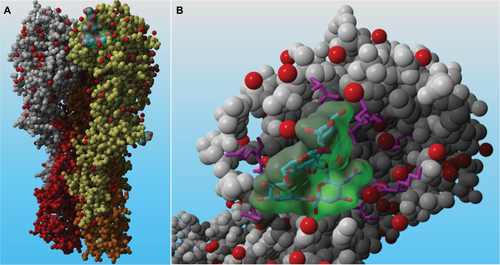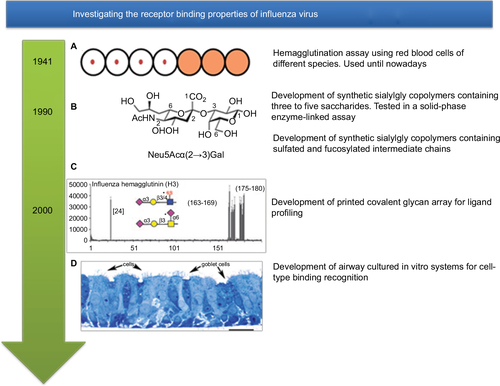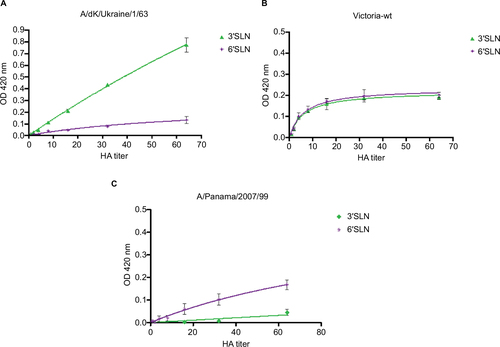Figures & data
Figure 1 Influenza virus HA molecule from A/California/04/2009 (PDB: 3ube).
Abbreviations: HA, hemagglutinin; LSTc, sialylneolacto-N-tetraose c; RBS, receptor-binding site; PDB, Protein Data Bank.

Figure 2 Schematic representation of the methods and techniques used throughout influenza virus history to identify the receptor type recognition.

Table 1 Residues at the RBS of the HA protein of H1N1 viruses isolated from humans, avian, or swine
Figure 3 Binding of influenza H3 viruses representing different stages of the subtype evolution prior to and since its emergence in humans.
Abbreviations: 3′SLN, 3′-sialyl-N-acetyllactosamine trisaccharide; 6′SLN, 6′-sialyl-N-acetyllactosamine; HA, hemagglutinin.


